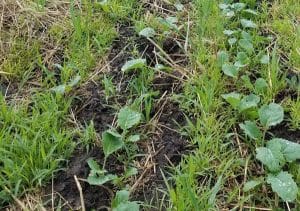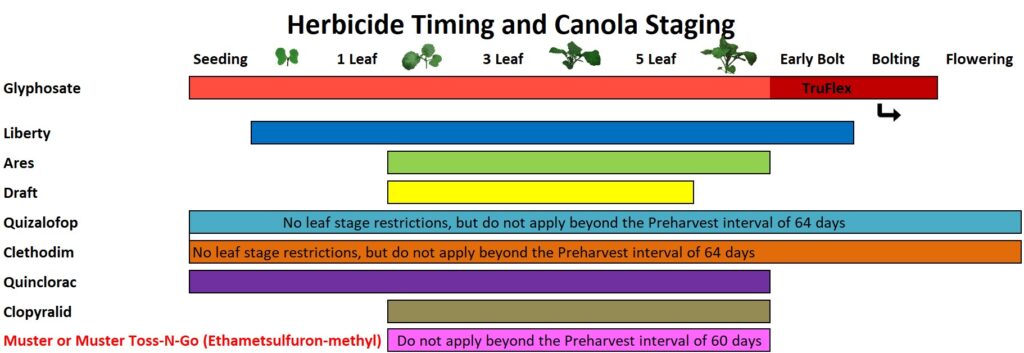A second application of in-crop herbicide is not always economical if the crop is well established, competitive and ahead of the remaining weed population.

Scout first
Scout two weeks after the first in-crop herbicide application. Scouting can determine whether the weed size, species and number warrant a second application, and help set an appropriate strategy for the second pass.
Reasons for weed survival after the first pass:
- The sprayer missed a patch. (Does the patch include many species of weeds and have a shape like a sprayer miss?)
- The first-pass products had limited activity on particular weeds. (Double-check the weeds on the product label.)
- Herbicide rates and/or water volumes were too low to provide control on a particular weed. (In this case, you may have these weeds showing up all across a field.)
- Weeds were already too large for label rates. (Escapes may show some leaf damage but not enough to kill the plant.)
- Weeds emerged after the herbicide application. (Are weeds small enough to support this explanation?)
- Weeds are resistant. (Were some of those weeds killed but an odd-shaped patch or a few random weeds were not? This could be a clue.)
Reasons to apply a second pass
Flawed first pass
Many situations, including dry conditions, lower water volumes, frost damage and herbicide resistance, can reduce herbicide efficacy. If the first pass didn’t do the job, a second pass may be required – with adjustments to improve results.
Stagey crop
Does the crop have a lot of young plants even with or behind the weeds, in terms of size? With improved moisture, these later-emerging crop plants may be able to close the gap with the first-emerging crop plants — but they will need the weed competition removed.
Clean up
Canola is often the clean-up crop for narrow-leaved hawk’s beard, round-leaved mallow, Group-1 resistant wild oats and other tough weeds. If these weeds are present, even at lower-than-economic numbers for the current crop, a second application may be required to prevent them from adding to the seedbank.
Excessive competition
If weeds are plentiful, at the same stage or ahead of the crop and the canopy hasn’t closed, these weeds can have a large yield impact. Follow label rates and timing for the specific canola HT system.
Critical weeds
Grade-impacting weeds such as cleavers may need a second pass.
Canola cultivar has stacked HT
When growing canola with two herbicide-tolerant (HT) traits – glyphosate-resistant TruFlex and glufonsinate-resistant Liberty Link, growers can apply at least two “effective” modes of action on the same field. (Unless the field has glyphosate-resistant weeds, then only one is effective.) Glyphosate and glufosinate are sometimes better suited to specific weeds and spraying conditions, and a stack provides the best of both worlds.
Tank mixes of glyphosate and glufosinate are not recommended due to weed antagonism, so they have to be applied in separate passes.
Follow labels for second pass timing
Apply the second pass before the window closes for each product. See windows for in-crop canola products in Weed control strategies for each HT system.
Weeds ahead of the crop: Apply the second application sooner than planned.
Perennial weeds behind but need spraying: As an alternative to the second early-season spray, growers may consider pre- or post-harvest glyphosate application as an alternative, especially if the weeds are delayed enough to avoid seed set prior to swathing.

